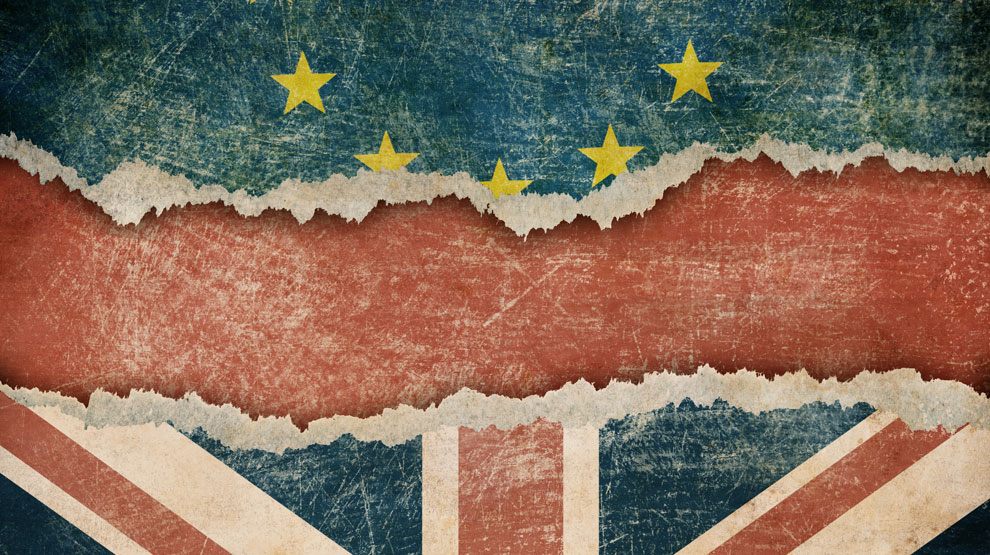by Sandy Nairn, Chairman of Templeton Global Equity Group, CEO of Einburgh Partners
As expected, Theresa May and her government survived the no-confidence vote called by the opposition Labour Party after the UK Parliament overwhelmingly rejected her withdrawal deal. Now UK political attention must turn back to the real job at hand—navigating the United Kingdom’s exit from the European Union. Sandy Nairn, chairman of Templeton Global Equity Group and CEO of Edinburgh Partners, analyzes the options and argues that the most realistic is an extension of Article 50.
We suspect there was relief on both sides when Jeremy Corbyn’s vote of no confidence in the UK government failed. It appeared neither party actually wanted a general election. Labour’s position in opinion polls indicate it would be unlikely to win and, although some polls suggest the Conservatives could increase their majority, many Tory members of parliament would be reluctant to go into a campaign with Theresa May as the leader.
The question on everyone’s lips therefore is: “What happens now?” It is symptomatic of the level of debate that the options which tend to get offered as panaceas for Brexit are rarely thought-through or viable.
No Deal Can Happen by Accident
Some observers believe the rejection of May’s withdrawal agreement has increased the chances of the UK leaving the European Union (EU) without a deal, but we believe the probability is still low. Theresa May is aware of how disastrous the impact could be, even if the extreme Brexiteers are not. Of course, this does not mean it cannot happen by accident.
Under a no-deal scenario, trade with the EU will automatically be subject to the common external tariff.
In addition, the World Trade Organization’s (WTO’s) most-favoured nation principle means the EU has to apply the tariffs and quotas they apply globally to the United Kingdom.
Under WTO rules, the United Kingdom would be required to charge other countries the same tariff and quota as it charges the EU and vice versa. This means no special deals between the United Kingdom and the EU. If the United Kingdom waived tariffs/quotas on EU goods to smooth trade, then these would have to apply globally. One only needs to consider the impact of non-EU food imports into the United Kingdom and EU to understand how implausible this solution actually is.
Norway Option Comes into Play
Our view is that focus will now shift towards the so-called “Norway” option, in which the United Kingdom would leave the EU but become part of the European Economic Area (EEA), alongside countries such as Iceland, Liechtenstein and Norway.
However, because the EEA is not a customs union, membership of the EEA would still require the Irish backstop, which has caused so much consternation to opponents of May’s failed withdrawal deal. In addition, the EEA membership is also very expensive—Norway is a top-10 per-capita contributor to the EU budget.
Neither is the process for joining the EEA hurdle-free. The United Kingdom would first have to join the European Free Trade Association (EFTA) and then apply for membership of EEA. This would require the ratification of 30 national parliaments, any of whom could object or demand specific concessions from the United Kingdom.
We calculate implementation of this approach would require a two-year extension to the existing March 29 Brexit deadline.
Extending Article 50 Deadline
The EU has clearly signalled that it will not grant an extension to re-enter a negotiation. It believes the negotiation has been completed.
On the other hand, we believe that if the UK argued that an extension was needed to put the proposal to the people in another referendum, it is highly likely it would be granted.
Labour Party policy has been to push for an election and failing that, then to have a second referendum. May’s confidence vote victory has effectively ruled out an early General Election so we believe it would be difficult for the Labour leader Jeremy Corbyn to oppose a second referendum.
Critically, the pressure group, Momentum—the driving force behind Corbyn’s election as leaders—is strongly in favour of a second referendum.
On the Conservative side, the different factions will likely squabble. But while we can expect the ardent leavers to characterise a second referendum as a “betrayal of democracy”, this is unlikely to hold water against a stalemate, with a resolution decided by the people in a democratic vote.
This would then lead to a debate about the exact question that would go on the ballot paper. We’d expect this to take up a considerable amount of energy.
However, by this time, the terms of the debate will have changed. The Remain campaign strategy is likely to be much more robust than at the previous vote and it will seek to address the concerns of Leave voters. For example, one can imagine the appearance of a “no Brexit dividend” used to fund investment in reducing regional inequality and improve public service provision in regions impacted by immigration.
The thorny question of immigration cannot be dealt with by conflict with the EU, but it would not be difficult to limit flows within the existing EU framework and this point is likely to be made.
From the Leave side it is likely that much of the debate will be about “betrayal” and the subversion of the political process. Leave campaigners may disown the existing negotiations as the failure of the negotiators and the intransigence of the EU. However, the economic benefits of leaving are going to be harder to promote and the challenges are less likely to be susceptible to the charge of simply being “Project Fear”.
The current polling evidence suggests that in the event of a second referendum, a reversal of the original result is more likely than not. Furthermore, the European Court of Justice has ruled that a country can unilaterally revoke Article 50 and return to being a member of the EU under the same conditions as previously.
Under a “Remain” scenario we could expect a sharp rise in sterling and sterling-related assets, although this may prove to be relatively short-lived. Under the “no-deal” outcome we would expect a similar move in the other direction which might initially be overdone, but with a prolonged negative period to follow.
Data from third-party sources may have been used in the preparation of this material and Franklin Templeton Investments (“FTI”) has not independently verified, validated or audited such data. FTI accepts no liability whatsoever for any loss arising from use of this information, and reliance upon the comments, opinions and analyses in the material is at the sole discretion of the user. Products, services and information may not be available in all jurisdictions and are offered by FTI affiliates and/or their distributors as local laws and regulations permit. Please consult your own professional adviser for further information on availability of products and services in your jurisdiction.
The comments, opinions and analyses expressed herein are for informational purposes only and should not be considered individual investment advice or recommendations to invest in any security or to adopt any investment strategy. Because market and economic conditions are subject to rapid change, comments, opinions and analyses are rendered as of the date of the posting and may change without notice. The material is not intended as a complete analysis of every material fact regarding any country, region, market, industry, investment or strategy.
To get insights from Franklin Templeton delivered to your inbox, subscribe to the Beyond Bulls & Bears blog.
For timely investing tidbits, follow us on Twitter @FTI_Global and on LinkedIn.














